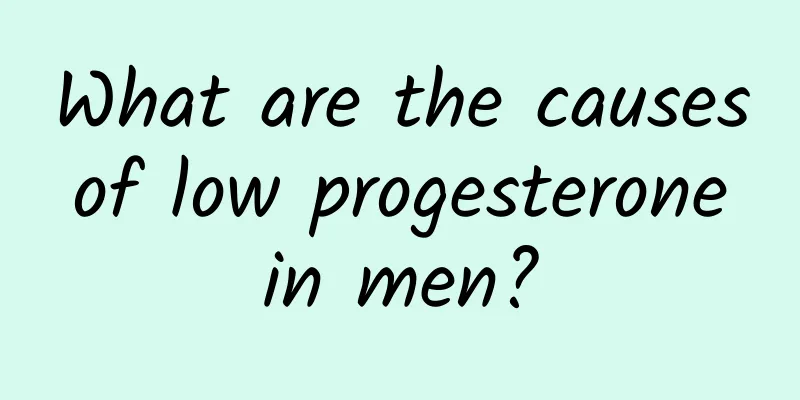What are the causes of low progesterone in men?

|
The importance of male reproductive health is no less than that of female, because reproductive problems are related to the birth of the next generation, and men and women are a closely related whole for the birth of the next generation. Problems with men will cause huge obstacles to the birth of the next generation. For example, low progesterone in men will also affect female pregnancy. So, what are the reasons for low progesterone in men? The normal value of male progesterone is 0.28-1.22. If you feel no discomfort in other aspects of your body, it should not be a big deal. If it is more than twice the normal value, the possibility of pseudo-andrology and pituitary tumor should be considered, and chromosome and MRI examinations are recommended. Estradiol, the most active estrogen in men, is produced in small amounts in the testicles and adrenal glands, but is mostly produced by the skin hair follicles, fat, nerves and other peripheral tissues from the conversion of the androgen testosterone. An adult man can produce 30 to 40 micrograms of estradiol per day. 1. Generally speaking, low progesterone in men is the cause of male infertility. Patients should undergo further examinations based on their own conditions to find out the cause of low progesterone. When there is no sperm or too little sperm, the sperm density in the semen is lower than 0.2×109/ml, the chance of pregnancy of the female partner is reduced, resulting in infertility. This type of infertility can be divided into permanent and temporary. The former is seen in congenital testicular development disorders or serious lesions of the testicles and seminal vesicles; the latter is more common in excessive sexual activity leading to a temporary failure of spermatogenesis, which is generally a decrease in sperm rather than a total absence of sperm. 2. Poor sperm quality: Too many inactive or dead sperm in semen (more than 20%), or sperm with very poor motility or more than 30% deformed sperm can often cause infertility. 3. Abnormal physical and chemical properties of semen. Normally, semen will coagulate into a gel-like state quickly after ejaculation, and then completely liquefy within the next 15 to 30 minutes. If the semen does not coagulate after ejaculation, or if it does not liquefy completely, it often indicates that there is a lesion in the seminal vesicle or prostate. Bacterial or viral infection of the reproductive tract can also cause changes in the composition of semen, ultimately leading to male infertility. |
<<: What should I do if the urethral opening of the glans penis hurts a little?
Recommend
If you don't wash your glans for a day, there will be a lot of dandruff
Smegma is also known as smegma. Smegma is a layer...
What ointment is used for scrotal ringworm
Everyone knows that tinea is a relatively stubbor...
How to treat fungal glansitis in men
In fact, when it comes to gynecological diseases,...
Middle-aged men's new perspective on sex
For men, ED (erectile dysfunction) and premature ...
What causes hard testicles?
Hard testicles are likely to indicate testicular ...
What causes low sperm count in men?
Oligospermia refers to a condition in which the n...
How to treat subcutaneous cysts? Folk remedies for subcutaneous cysts
Subcutaneous cyst is a common skin disease. Patie...
What is the best medicine for glansitis?
Glanitis is a very common disease. In addition, s...
Why do I have stomach pain after ejaculation?
When the male body feels uncomfortable, it needs ...
How to cure impotence and premature ejaculation
For an adult man, once he finds out that he has i...
Why don't you grow a beard?
When men start to secrete male hormones, secondar...
What foods can make boys horny?
Because of the high pressure from work, many men ...
Causes of rapid ejaculation during sex
Sexual intercourse is a normal physiological need...
What to do if you have high blood pressure at the age of 30? Several ways to prevent high blood pressure
When it comes to height and weight, I believe man...
If your blood sugar level is high, these fruits and vegetables are the best at lowering blood sugar!
It is normal for blood sugar to be high occasiona...









